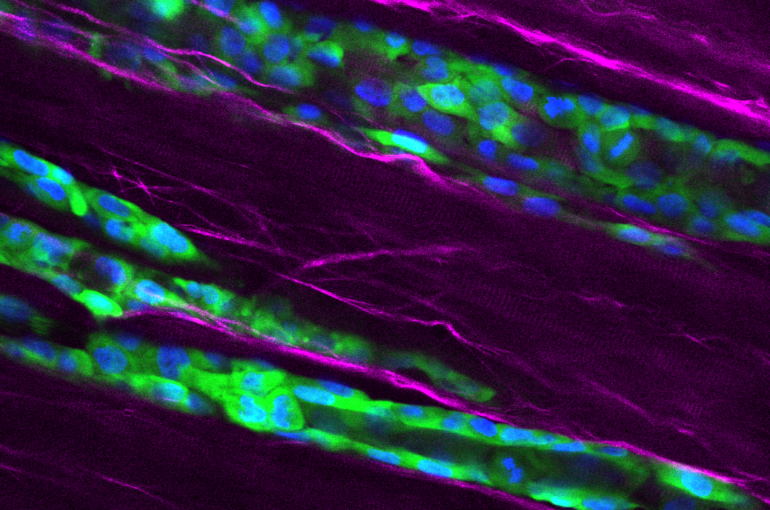Spread of turbulent cancer cells

Cancer metastasis involves the collective migration of cancer cells in confined space, a problem that has been widely investigated in vitro. Here we quantify the flow patterns of cancer cell as they invade tissue space and deform the surrounding extracellular matrix in vivo. Cell motion self-organizes into well-defined traffic lanes aligned along interstitial tracks and resembles the flow of a turbulent active fluid. Our study provides insights into the mechanisms underlying tumor invasion and sheds light on physical factors contributing to metastatic spread.
We analyzed the cell-induced deformations in the extracellular matrix and observed how the cells were making their way between tissues by compressing the surrounding cellular extracellular matrix, showing how tissue confinement by the extracellular matrix plays a key role in the organization and motion of cancer cells. The understanding we gained through this work provides useful information that can be used as a benchmark to develop more realistic theoretical, computational and in vitro models of collective cell migration.
Our study represents an important step towards understanding the complex dynamics of confined collective cancer cell migration in a physiologically relevant three-dimensional context. Our analysis provides quantitative measurements in vivo of biophysical parameters such as characteristic cell velocities and vorticities, collagen displacements and strains that can be used to gain a deep understanding of the mechanics and dynamics of metastatic spreading.
Read the paper: Confined cell migration along extracellular matrix space in vivo, Proceedings of the National Academy of Sciences, December 2024, Proceedings of the National Academy of Sciences,
DOI: 10.1073/pnas.2414009121.


